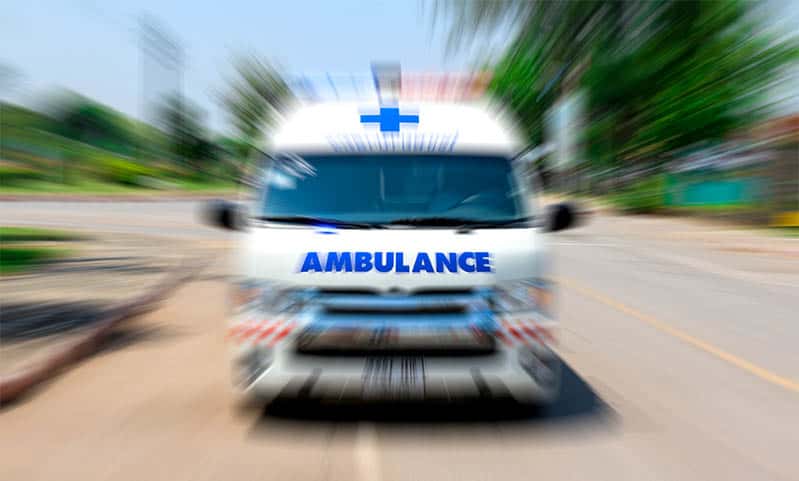Fatal Pedestrian Accident in East Harlem, New York
A toddler is dead, and his mother is seriously injured, after a speeding pickup struck them as they crossed the street.
The wreck accident occurred near the intersection of 116th Street and First Avenue in East Harlem.
A 59-year-old-man, whose name was not released, struck a woman and her child, who was in a stroller, in his Ford F-250 truck.
Emergency responders rushed mother and child to a nearby hospital. She is expected to survive, but 3-year-old Bertin Dejesus did not.
Charges are pending against the driver.
Speed and Pedestrian Accidents
Excessive velocity increases the risk of a collision and the force in a collision. So, speed is a factor in about a third of the fatal pedestrian accidents in New York.
Speed multiplies stopping distance, which is the distance most vehicles travels in the few moments it takes for a tortfeasor (negligent driver) to see a hazard, apply the brakes, and safely stop the vehicle.
At 30mph, stopping distance is about six car lengths. At 60mph, stopping distance triples to eighteen car lengths.
Most pedestrian accidents take place outside crosswalks. So, tortfeasors may not be travelling 60mph, but they are usually moving a lot faster than 30mph.
Speed also multiplies the fatality rate. At impact speeds of less than 20mph, the pedestrian death rate is about 10 percent. That proportion skyrockets to about 90 por ciento at 40mph.
Vehicle occupants have multiple restraint layers and steel cages to protect them in collisions, but pedestrians almost literally only have the clothes on their backs.
Su reclamo por daños y perjuicios
If the tortfeasor received a traffic citation, the tortfeasor may be liable for damages as a matter of law. The negligence per se doctrine applies if:
- The driver violated a safety law, and
- That infraction substantially caused the crash.
Emergency responders often file criminal charges in fatal accident cases.
But in many nonfatal cases, emergency responders may not even issue traffic tickets, especially if the victim was outside a crosswalk.
As mentioned, most of these incidents take place outside marked crosswalks. So, a Abogado de lesiones personales de Nueva York must often use the ordinary negligence doctrine.
All drivers have a duty of reasonable care.
Another person’s mistake, such as crossing the street outside a crosswalk, does not change this responsibility.
If the tortfeasor did not drive defensively, the tortfeasor might be legally responsible for damages. In court, the victim/plaintiff must establish a lack of care by a preponderance of the evidence (more likely than not).
Damages in a car crash claim usually include compensation for economic losses, such as medical bills, and noneconomic losses, such as pain and suffering.
Defensas de la compañía de seguros
Although this compensation is available, insurance companies do not simply give it away. In pedestrian accident claims, there are several legal doctrines available.
Distracted walking, which is a form of contributory negligence, is one example. Device distraction only causes a small number of the distracted driving-related crashes in New York. But hand-held devices are almost exclusively the cause of distracted walking.
The insurance company has the burden of proof on this point.
Evidence of device distraction could include web browsing logs, device use records, and the tortfeasor’s testimony about distracted walking.
If there is evidence of contributory negligence, the jury must divide fault between the victim and tortfeasor on a percentage basis.
New York is a pure comparative fault state. Even if the victim was 99 percent responsible for the crash, the tortfeasor is still liable for a proportionate share of damages.
At best, contributory negligence only reduces the amount of damages.
The sudden emergency defense, however, completely excuses negligent conduct. This rule applies if the tortfeasor:
- Reaccionó razonablemente a
- Una emergencia repentina.
The first prong is usually present in all cases except hit-and-run crashes. After a serious collision, it’s reasonable to pull over, render assistance if possible, and wait for emergency responders to arrive.
The second prong, however, is usually absent in pedestrian accidents. In this context, a “sudden emergency” is usually a hood fly-up or another completely unexpected situation.
A jaywalking pedestrian, while unusual, is hardly in this category.
So, even if the tortfeasor remained at the scene of a pedestrian accident, the sudden emergency defense usually does not apply.
That’s especially true if there were no unusual circumstances, such as a victim running across a rural road in complete darkness.
Pedestrian crash victims may be entitled to substantial compensation.
Para una consulta gratuita con un abogado con experiencia en lesiones personales en Nueva York, póngase en contacto con Napoli Shkolnik PLLC. Las visitas al hogar y al hospital están disponibles.
